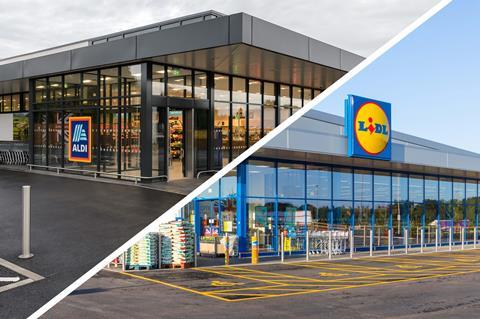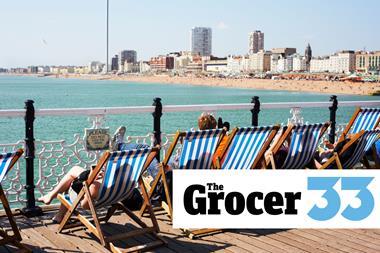
Aldi and Lidl are shifting focus away from traditional low-affluence catchment areas and increasingly targeting middle-class neighbourhoods as they expand, exclusive analysis shows.
After decades of heavily favouring poorer areas, the two have gravitated steadily towards more affluent neighbourhoods over the past five years, according to location analytics firm Maximise UK. (See data table below)
In 2017, 55% of their stores were in areas of below-average affluence and just 12% in above-average affluence catchments, according to the analysis, with the remainder in places of average affluence.
By 2018 to 2021, the split had shifted, with 40% of new stores opened in below-average affluence catchments and the proportion in above-average affluence neighbourhoods nearly doubling to 23%.
In 2022, the shift accelerated further, with 36% of their new stores in below-average affluence areas and 27% in areas of above-average affluence.
Maximise UK’s analysis – based on social economic census data and a 500 m store radius – shows Aldi weighting its latest openings to middle-class areas more than Lidl. In 2022, 28% of Aldi’s new stores were in above-average catchments compared with Lidl’s 25%.
It comes as both continue to make big gains in the cost of living crisis, with their combined market share hitting 17.7% this week [Kantar 12 weeks to 16 April] up from 15.4% a year earlier. Aldi’s reached double-digits for the first time, at 10.1%, up from 8.8%.
Maximise UK CEO David Haywood said their shifting towards middle-class areas would make it harder to find new sites as they encroached on the catchments of traditional supermarkets.
“The tables clearly show how both are moving away from the traditional discount catchments,” he said. “The issue associated is that you face higher levels of competition and higher branch development costs. This will place pressure on the discount model and branch opening opportunity.”
Deprived areas
Aldi said it was still aiming to add sites in less well off areas, while Lidl pointed to a list it published this week of hundreds of desired locations, including in areas of low affluence.
The list also included some of the most affluent parts of London, such as Chelsea, Kensington and Knightsbridge, though Lidl said it represented areas it would like to be in, rather than new store plans.
Lidl has scaled back planned store openings for 2023 from the usual 50 to 25, with 15 of those opened so far, bringing the total to about 960. Aldi is weighting its planned 40 openings toward the end of the year, with its estate standing at ‘over 990’ stores since the start of 2023 and the 1,000th expected in the third quarter.
Both have set a target store number for the end of 2025: 1,200 in Aldi’s case and 1,100 in Lidl’s.
Lidl GB chief development officer Richard Taylor this week said the vision of 1,100-plus stores was unchanged but “what’s important is that we take a strategic and sustainable approach to getting there”.



















No comments yet